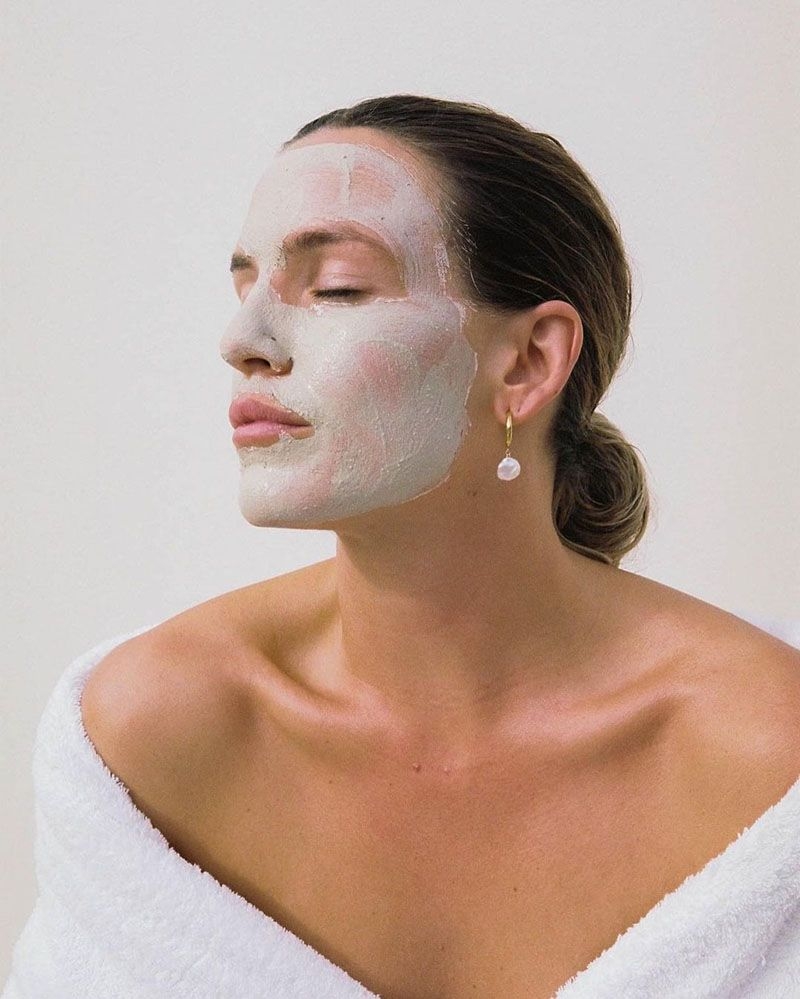
Image: @olivecooke
Seasonal skincare is important but is by no means the only criteria for choosing the right routine. The hormonal changes experienced by a female body throughout the menstrual cycle cannot be dismissed.
The levels of estrogene, progesterone and testosterone not only impact our mood but also the state of our skin overall. Our job is to help it look its healthiest by providing a tailored cycle-conscious skincare.
On average, a menstrual cycle lasts four weeks but can go on for anything between 21 and 35 days. Experts typically make a distinction between 2, 3 or 4 stages of the cycle. We will be looking at the cycle as a four-stage phenomenon to help us dive into the appropriate cyclical skincare in as much detail as possible.
A follicular phase lasts 12-14 days. This is the time when the female hormone estrogen - produced by our ovaries, adrenal cortex and body fat - is at its peak. You may notice that your energy and mood are typically at their best during this stage. It is also a beneficial time for our skin, with minimum observable inflammation, overall hydration and glow.
However, for some women the menstrual cycle is a real challenge. When periods are painful, prolonged and close together, our body tends to be weakened and experience a deficit of vitamins and microelements. Increased levels of the stress hormone cortisol are often to blame for a depressed postmenstrual state. This can often manifest in our appearance as well, resulting in dry and dull skin even during the follicular stage, when it needs all the extra time to repair.
In the first two weeks after menstruation, opt for light products that do not overload the skin, prioritising serum, fluid or gel textures. Look out for the following ingredients:
Retinoids and AHA-acids are best avoided during this time.
As for an appropriate body care routine, the follicular stage is a great time for cellulite preventing treatments using lipolytic creams containing caffeine, theobromine, or tea and guarana extracts. It is also an opportune time for intense therapies such as sports, anti-cellulite or deep tissue massage.
This is the shortest stage which usually starts on the 14th day of a cycle and lasts up to 3 days. This very short phase, however, frames some significant changes in our bodies. As an egg prepares to move from the ovaries into the fallopian tubes, hormones reach their peak. Many women can experience such physical symptoms of ovulation as abdomen pain and increased body temperature.
Tension and stress are also felt by the skin during this hormonal leap, as it is forced to performs its excretory, protective and thermoregulating functions to the maximum. Calming skincare is the best solution for this phase, focusing on creams with a delicate creamy texture, creamy or sheet masks with extracts of chamomile and calendula. Clay masks will also come in handy at this time by helping pull out impurities, providing a detoxing effect and supplying the necessary minerals to the skin.
Corpus luteum (Latin for “yellow body”) is the main protagonist of the luteal phase of the cycle, which usually lasts around two weeks. It makes its appearance as the follicle ruptures, synthesising the female hormone progesterone with the male steroid hormone testosterone.
The former’s goal is to help maintain pregnancy by stimulating fat synthesis and retaining fluids in the body. The appearance of eye bags, puffiness in the face and body are commonplace for this phase of the cycle. In addition, tiredness and lack of energy are common.
Pre-menstruation is when inflammation really goes to town on our skin, especially when it comes to individual spots in the lower third section of the face. This is all to do with increased levels of testosterone, to which our sebaceous glands are particularly sensitive. As a result, they begin to produce more sebum, which, in turn, is a beneficial environment for the spread of P. acnes Propionibacterium producing acne.
With this in mind, what skincare should you choose?
Body care will benefit from venotonic ingredients, which will help improve blood and lymph circulation and reduce puffiness as a result. Look out for products containing such ingredients as horse chestnut extract, menthol and camphor.
Menstruation lasts 3-7 days, with the first few typically bringing the most discomfort. The influence of the prostaglandin hormone reduces our ability to endure pain, making abdomen and lower back aches a common occurrence. To add to the mix, we are often plagued by irritability, sleepiness and exhaustion.
All you need to worry about at this point is to put any complex beauty routines aside. Simplify your approach as much as you can to avoid overloading the skin and let it recover naturally. Here are some of the things worth focusing on: